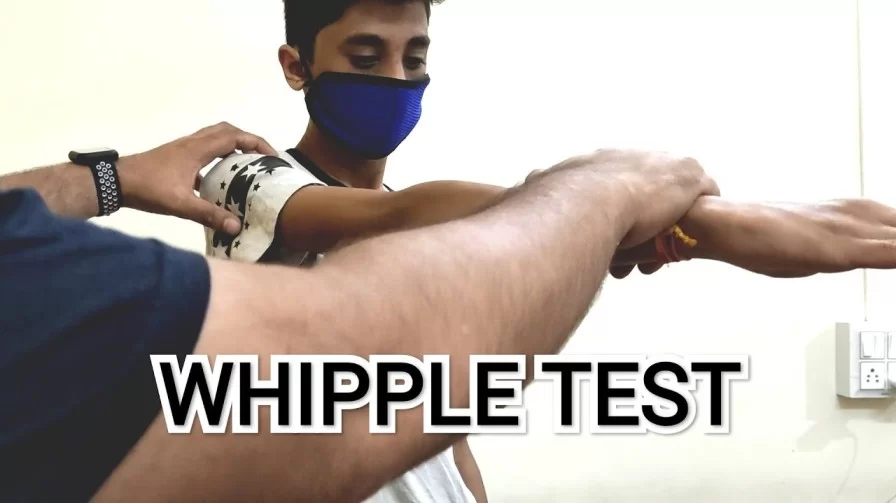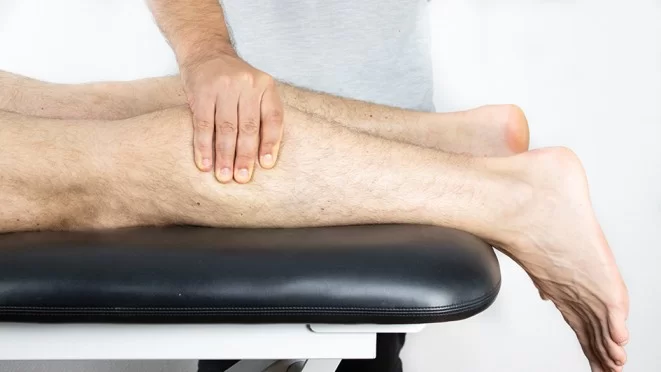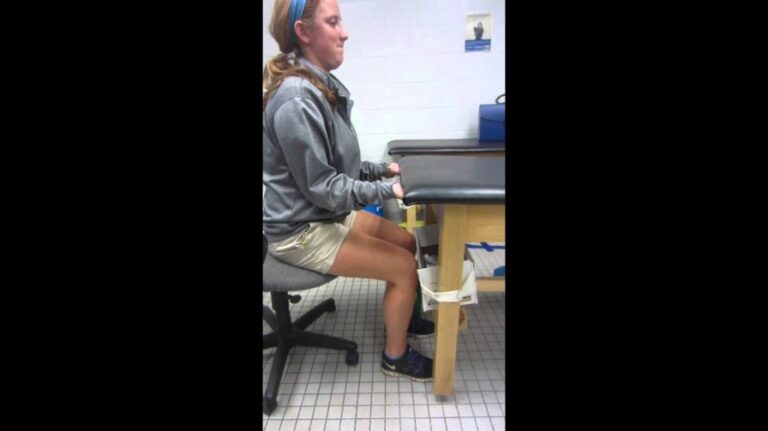Whipple Test of the Shoulder
- This test is applied to the clinic to the check tear of the rotator cuff.
- This clinical test is applied by the doctor or therapist when the patient is complaining about shoulder pain.
- This test checks the partial rotator cuff tear means to check the muscle of the rotator cuff like supraspinatus, infraspinatus, subscapularis & teres minor.
- So that this test also checks the muscle test or weakness.
- This test is applied to the examiner part of the assessment.
What is the Purpose of the Whipple test of the shoulder?
- This test is used to examine the superior labrum tear or tears of the partial rotator cuff.
What is the Technique of the performance of the Whipple test of the shoulder?
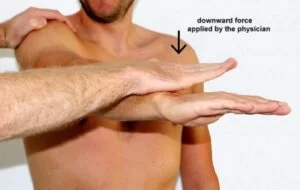
- Starting position of the patient for the test is the standing position.
- The patient stands with the arm forward flexed to 90′ & adducted until the hand is opposite the other shoulder.
- The examiner pushes downward at the wrist while the patient resists.
What is the result of the Whipple test of the shoulder?
- The test is considered positive for superior labrum tears or partial rotator cuff tears.
What is Evidence of the Whipple test of the shoulder?
- When the partial tear in the supraspinatus tendon this Whipple test shows :
- Sensitivity of the Whipple test of the shoulder = 88.6%
- Specificity of the Whipple test of the shoulder = 29.4%.
- So that this test is less effective than the full can test & the empty can test.
Upper cut test
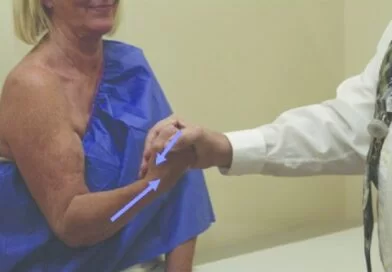
- The patient is in a standing position with the shoulder in neutral rotation means no medial/lateral rotation by the side with the elbow flexed to 90′.
- The forearm is supinated & the head is in a fist.
- The examiner puts a hand over the fist to resist the patient’s movement.
- The patient then actively & quickly brings the hand up & toward the chin doing a boxing upper cut punch.
- A positive test is indicated by pain or a painful pop over the anterior shoulder & is an indication of a biceps injury.

